Barbed wire, dust and Araucarias
Sunday, January 7, 2024
- Patagonia
I spent the last two days before my flight to Santiago de Chile mainly with packing my equipment.

Maggie drove me to Charles de Gaulle airport in her car. There I packed Siemis (my bike) in a box. Check-in with Air France went pretty well and smoothly.

After a 14 hour flight I landed on South American soil for the first time in my life.
I spent the first few days discovering the big city. Almost 6 million people live here.
First I visited the Museum of Memory and Human Rights. It is dedicated to the memory of the victims of the military dictatorship under Augusto Pinoche.

Parts of his collection are part of the UNESCO World Documentary Heritage.
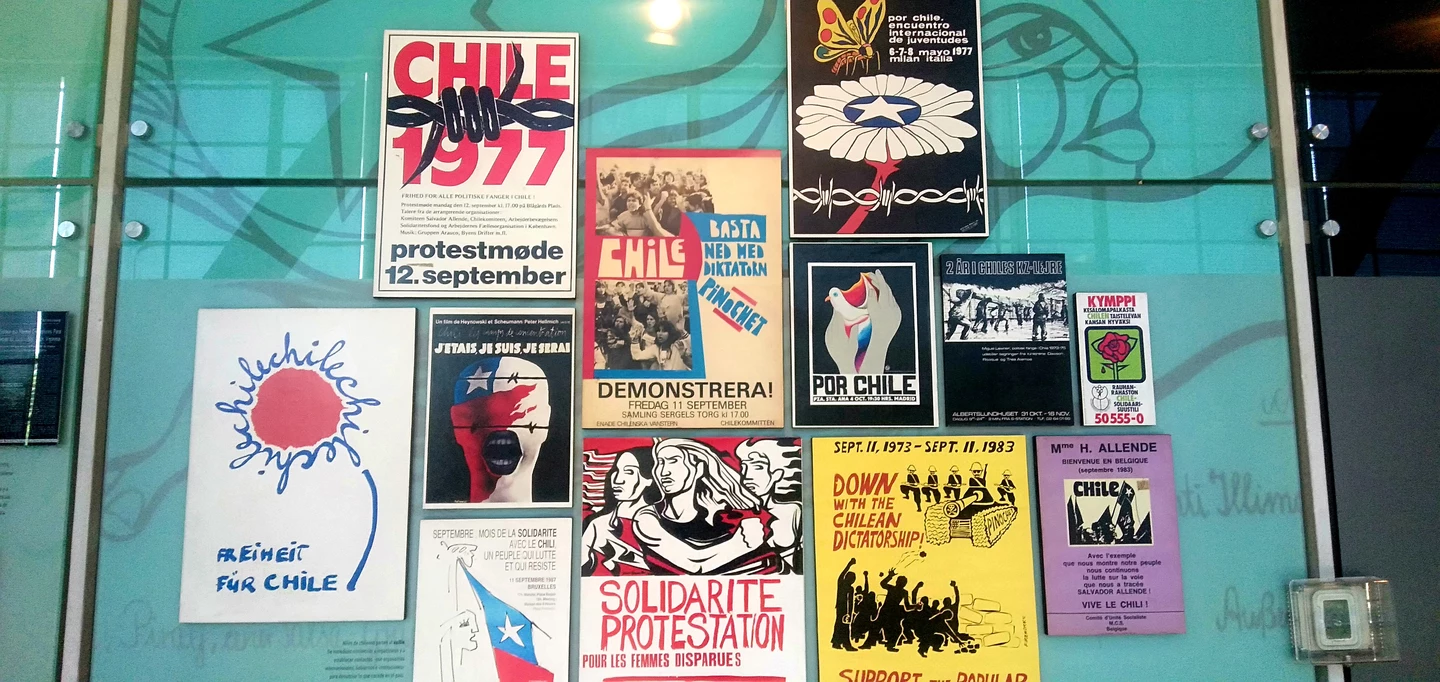
The next day I went to Villa Grimaldi. Opponents of the Pinochet dictatorship were tortured on the site from 1975 to 1988 (4,500 people tortured and 241 of them got killed or disappeared to this day).

Finally, I visited the main cemetery. This is now considered the national cemetery of Chile. Around 2 million people are buried on the 86 hectare site.
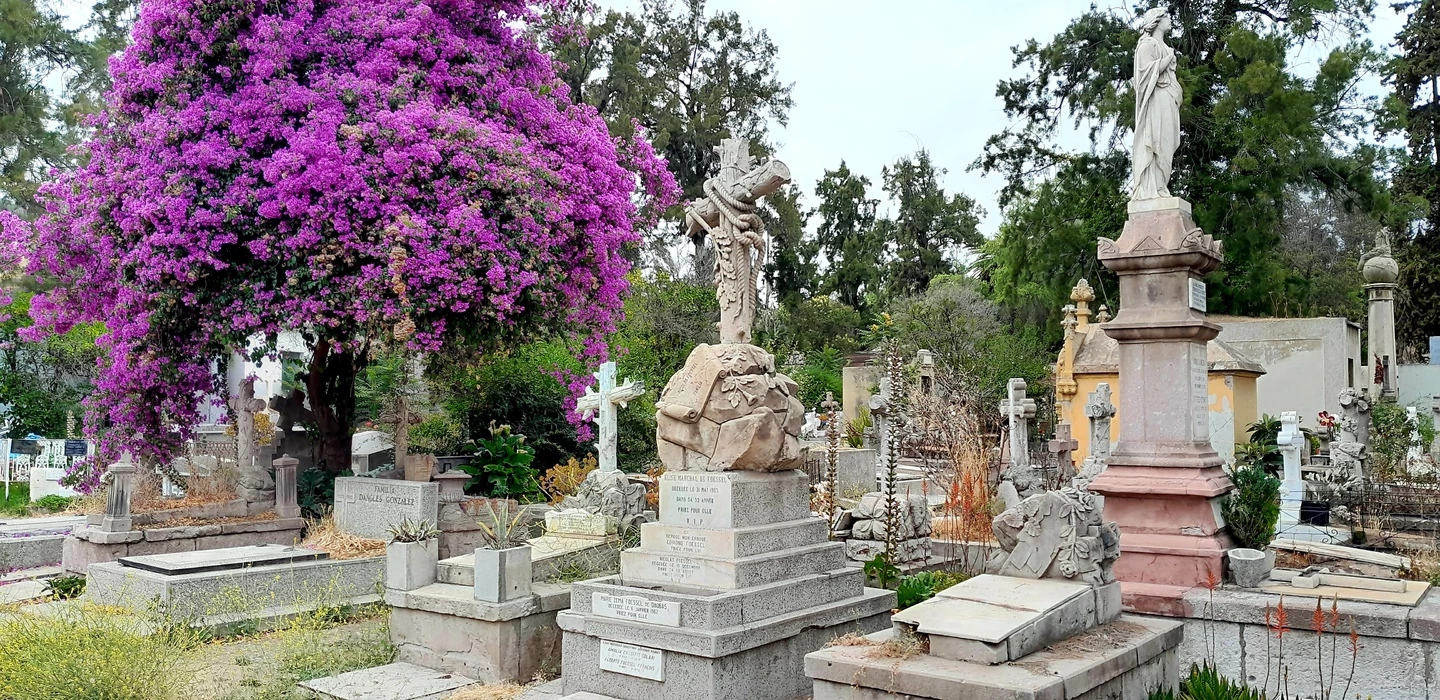
Almost all of Chile's presidents rest here, as well as many celebrities and important artists. Erich Honecker, the former head of state and party leader of the GDR, was cremated here after his death in exile in Chile.
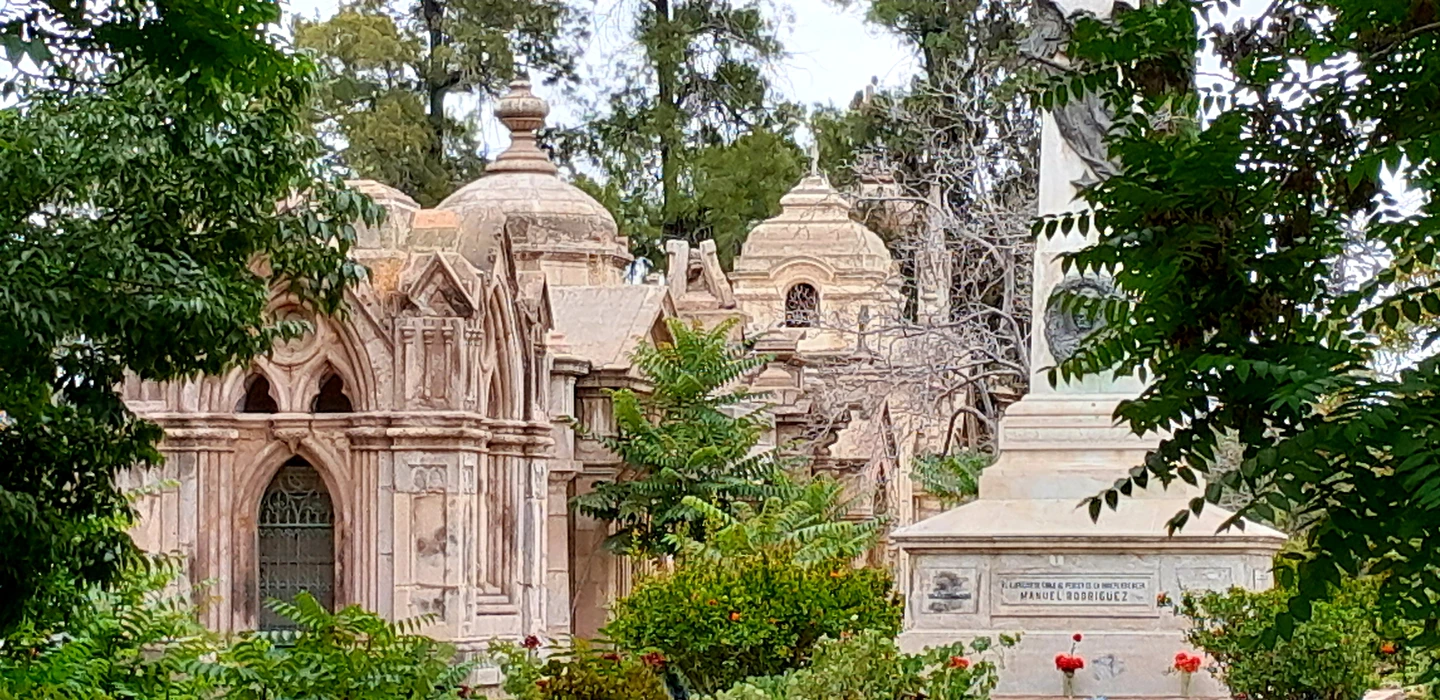
The oldest part of the cemetery is in the north. Crypt and earth burial are the dominant grave forms. I also found the many grave niches impressive.
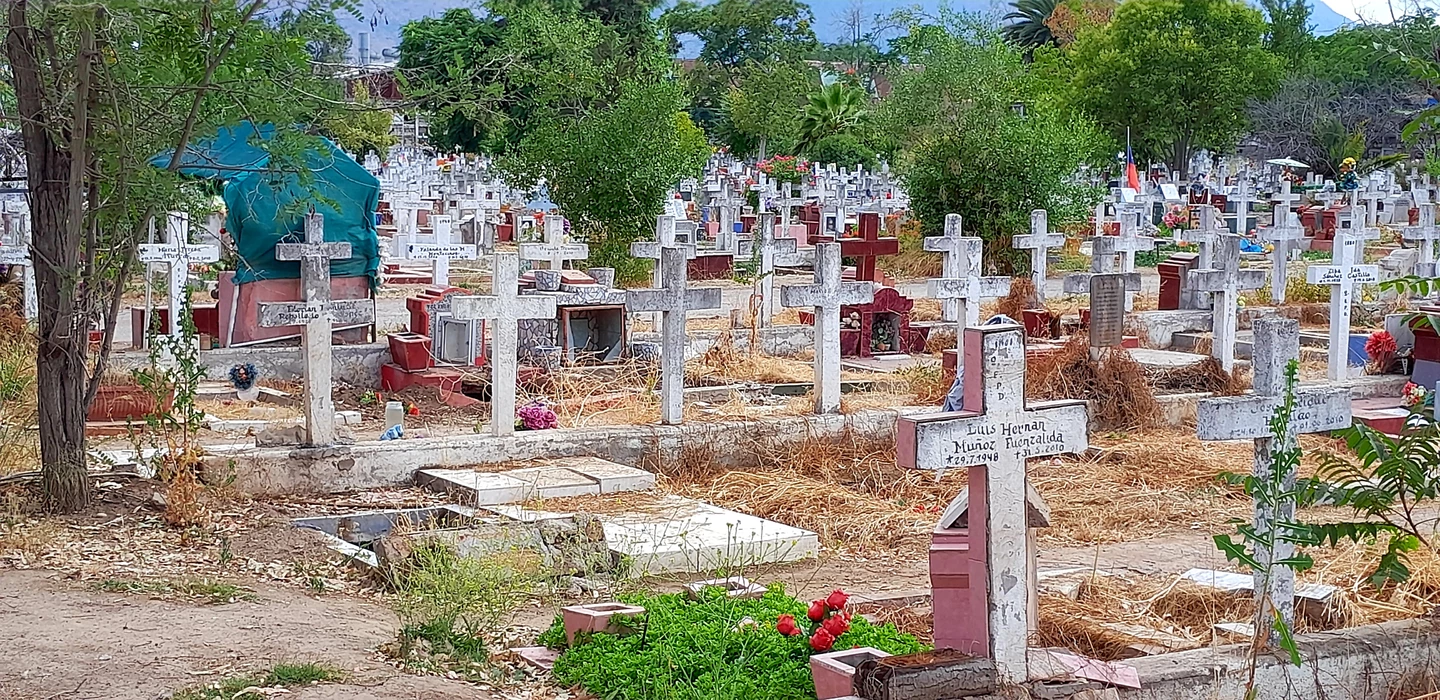
The journey out of Santiago de Chile went surprisingly well despite the heavy traffic. I particularly liked the bike paths.
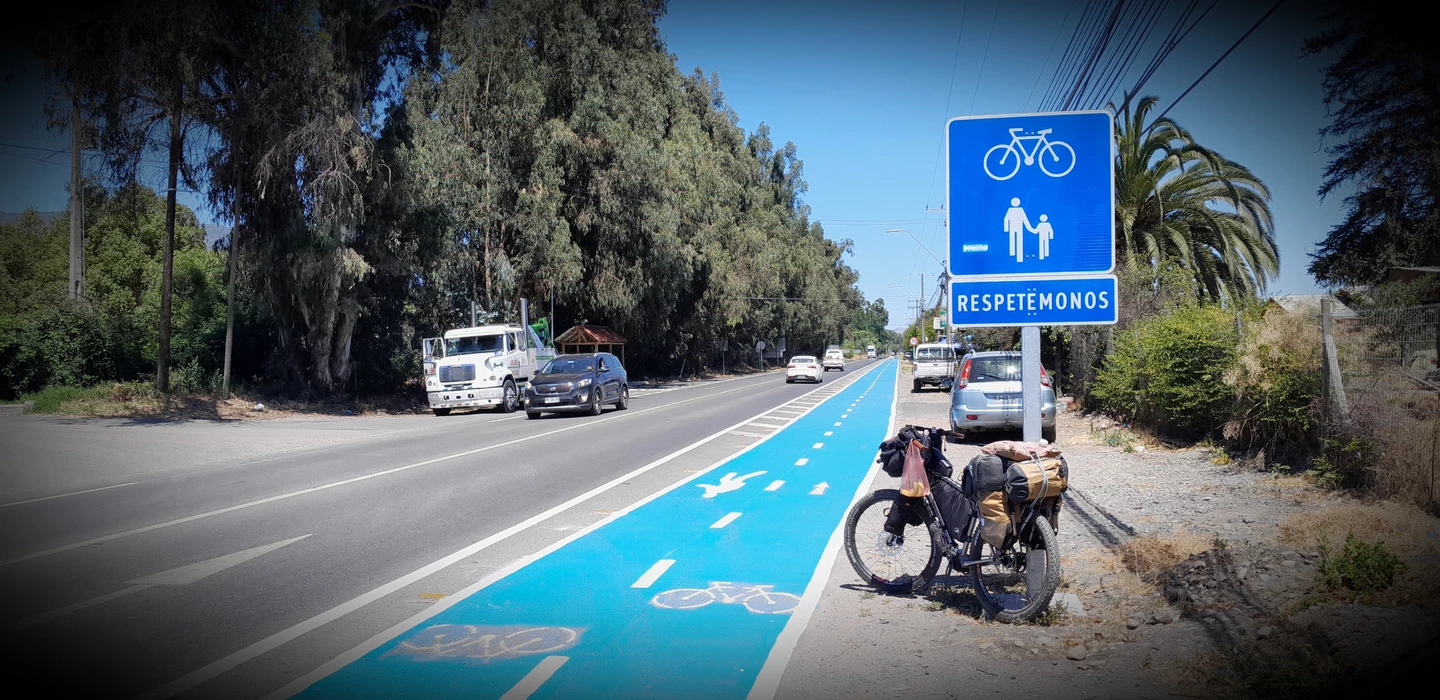
These are nicely separated from the rest of the traffic and you can cycle safely through the city. I also really liked the many murals and graffiti.
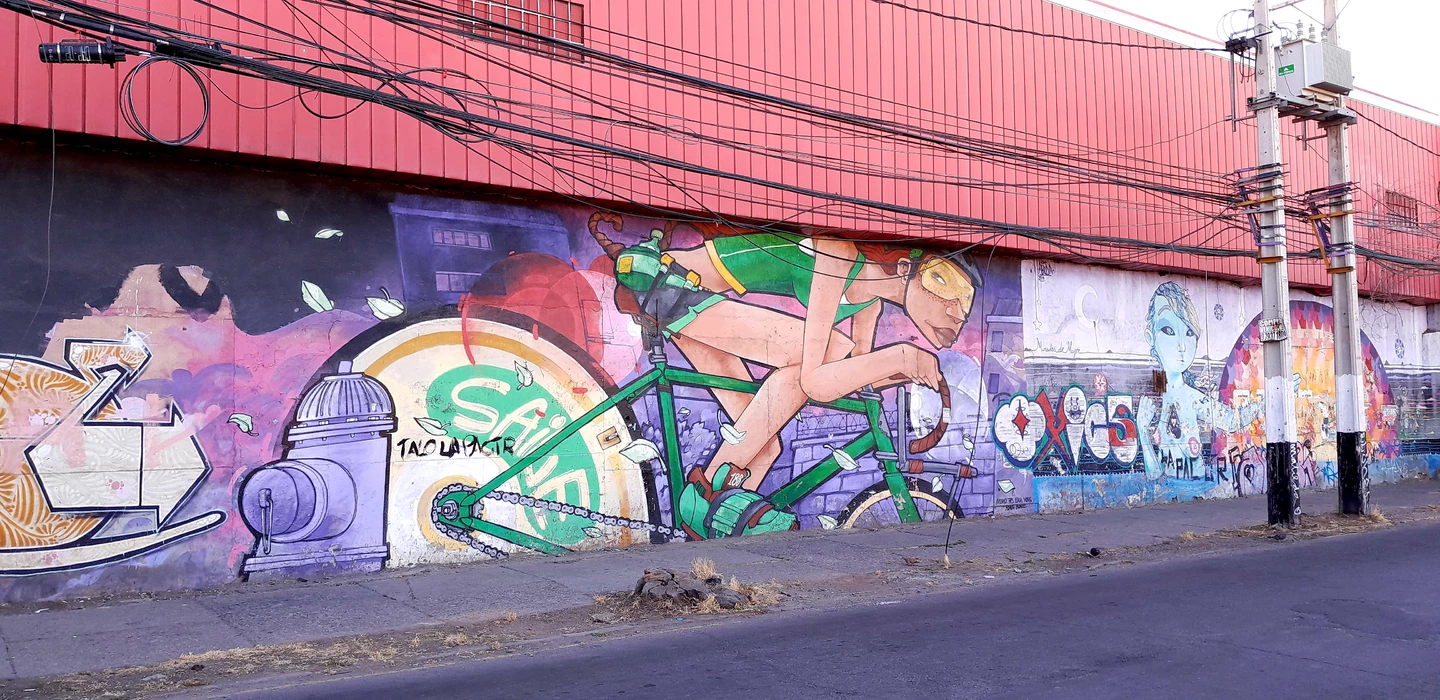
Since it is currently midsummer, it gets quite hot during the day. For Patagonia I brought my winter equipment with me, including a thick sleeping bag and winter tent. The material is a little out of place here.
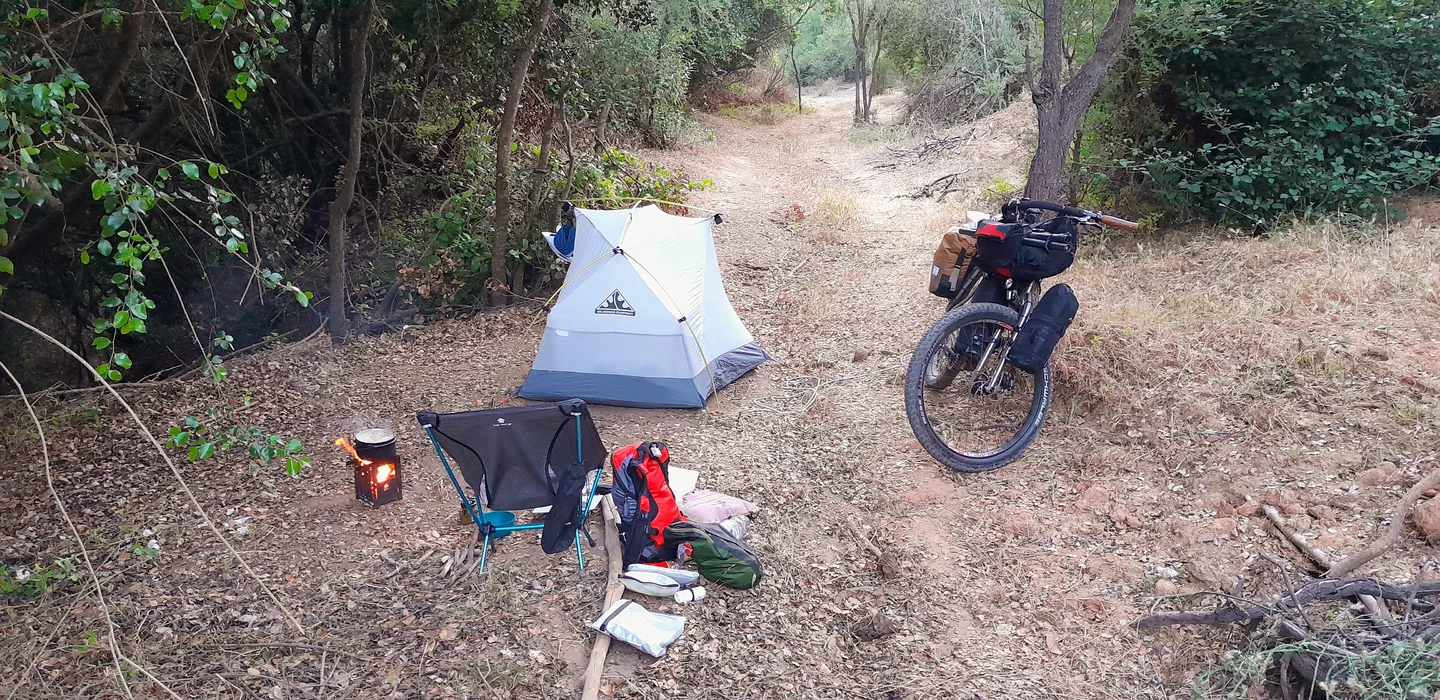
Something that really impressed me here from the start is the friendliness of the people. I regularly received something as a gift when I wanted to shop somewhere.

In Talca I just wanted to have a quick morning coffee at a food truck. After a short conversation, the owner gave me 3 loaves of bread, which his wife freshly prepared for me.

Outside Chillán I asked a vegetable and fruit dealer for 2 bananas and was immediately given a sack filled with blueberries. The owner didn't want to accept any money.

Minimarkets are also ideal for me because they offer many products in small quantities. Perfect for transporting.
However, it is not always easy to find a place to sleep. Practically everywhere the country is fenced with barbed wire. Sometimes I had to open a gate to be able to set up my tent anywhere.

Unfortunately, there are no longer any cycle paths on the main roads outside of the cities and with all the traffic it is not always pleasant to ride there.
That's why I tried to use the quieter side streets if possible. These are made of a fairly loose material, which mainly consists of stones and sand. Sometimes quite difficult to ride a bike on.
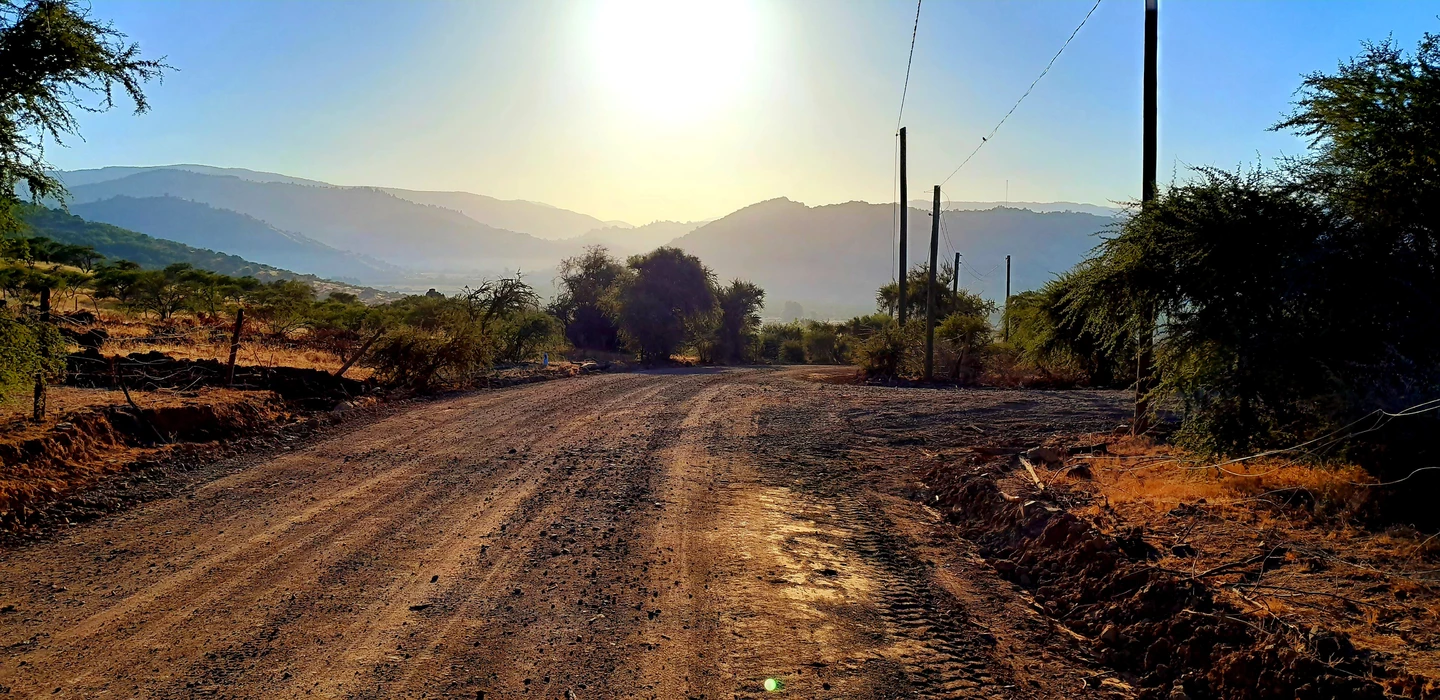
Added to this are the steep gradients. I couldn't always get up with my fully loaded bike, but had to push. However, with a few curse words it worked pretty well.
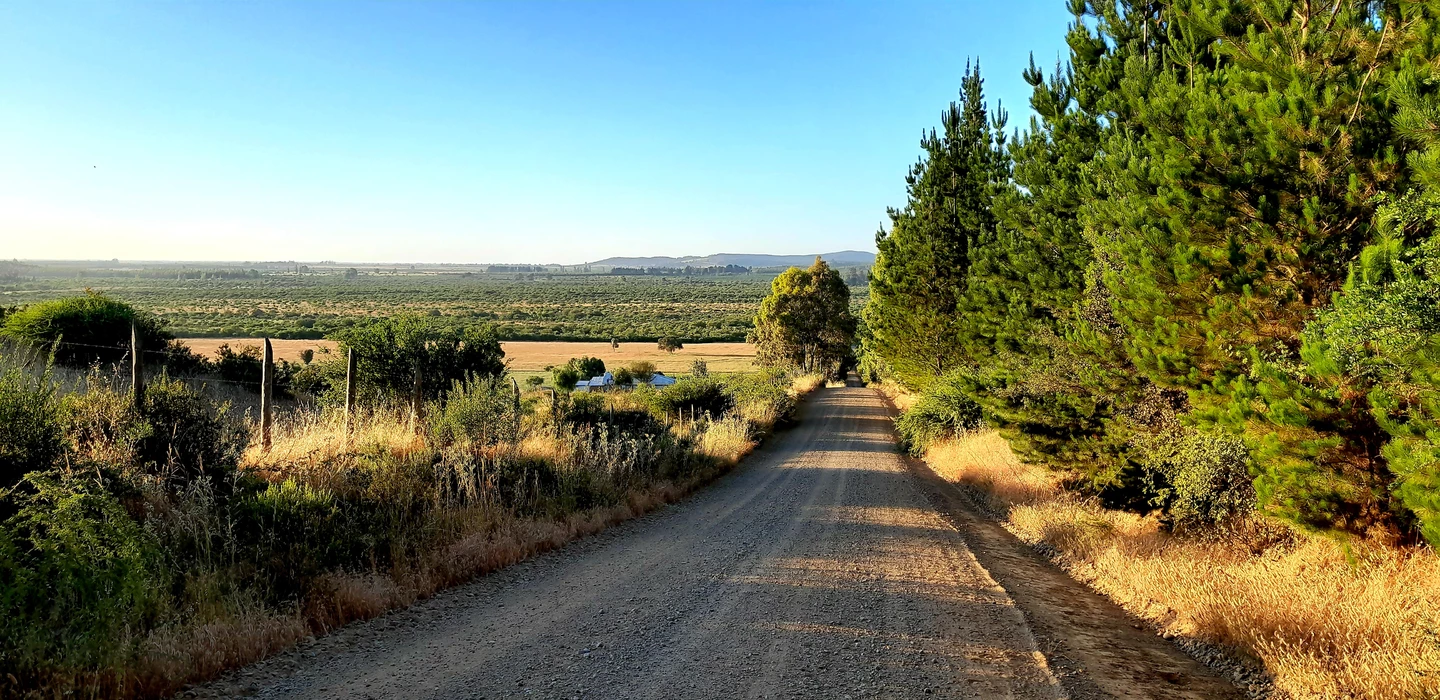
At one point the road led directly through the river. My new bike rides wonderfully and has withstood the harsh conditions in the pampas surprisingly well so far.

I didn't meet any tourists in these rural areas. I came through some wine-growing regions and also met local racing- and mountain bike riders.
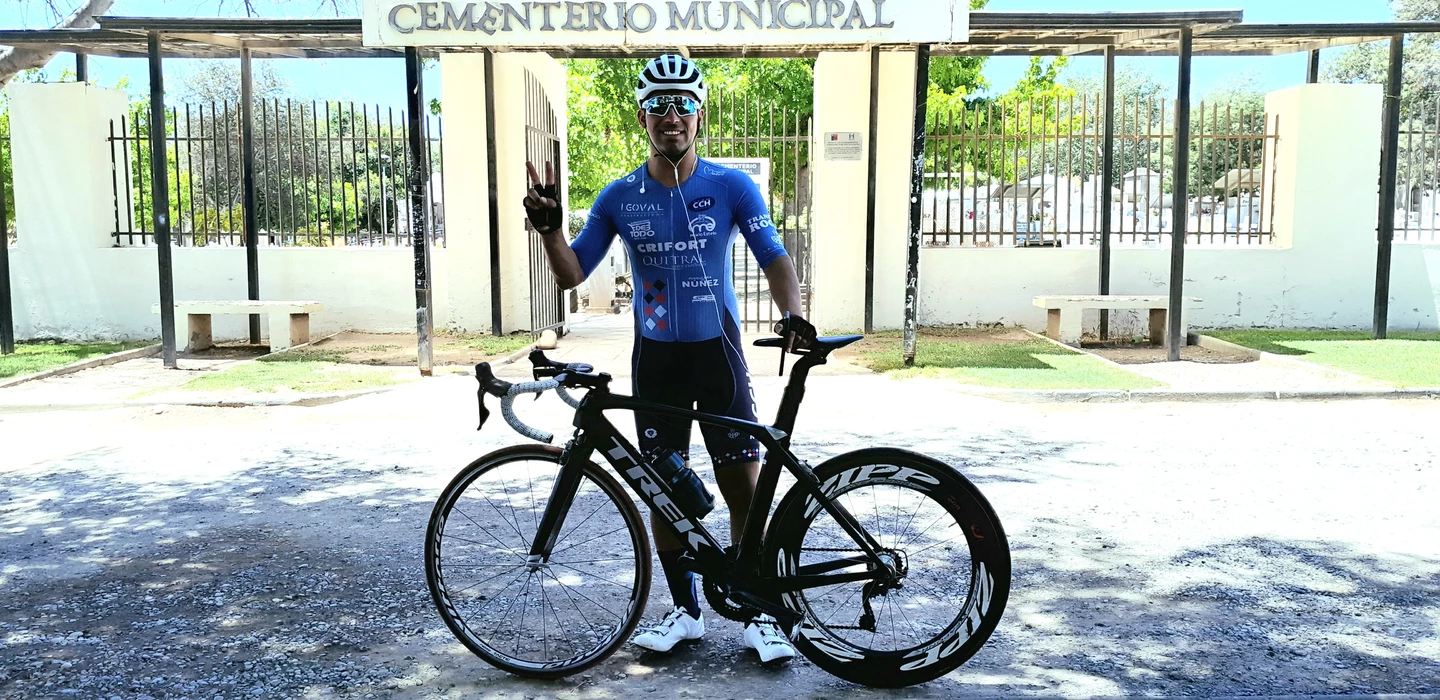
After 8 days I reached the first campsite in Tucapel. This serves more as a picnic spot for people from the city. There is no running water, but a river nearby to wash yourself and your clothes.

Juan, the groundskeeper, lives here all year round and was very helpful. After a day of rest, I continued cycling via Quilleco to Santa Barbara. My first milestone.
A few kilometers further up the river is the Trompelhueno campsite. This one is much better equipped.

From there I wanted to continue on a quiet and very beautiful side road and then take the ferry across the river. However, it was not operational upon arrival.

Directly below there is a fairly large rapid. A crossing with my packraft was too tricky for me.
So I had no choice but to cycle all the way back to the campsite. There I was invited to a birthday party by Cristian and his family.

Cristian speaks German very well. His children also learn a little German at school. Thank you for your hospitality.
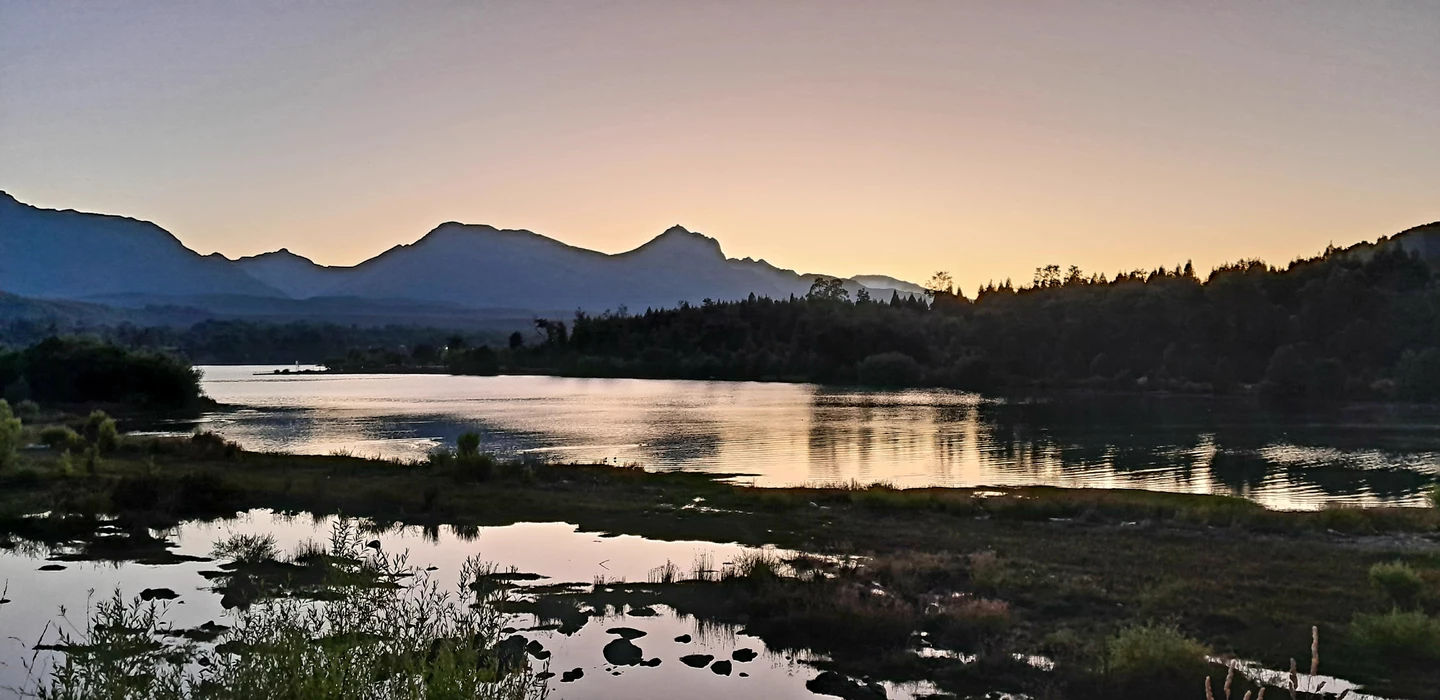
The next day I continued on the official road to Rolca. The opening times here in South America are another challenge for me. Almost no shop opens before 10:00 a.m.
Just outside Rolca, the asphalt road ended at the first dam. Gravel road ahoy.
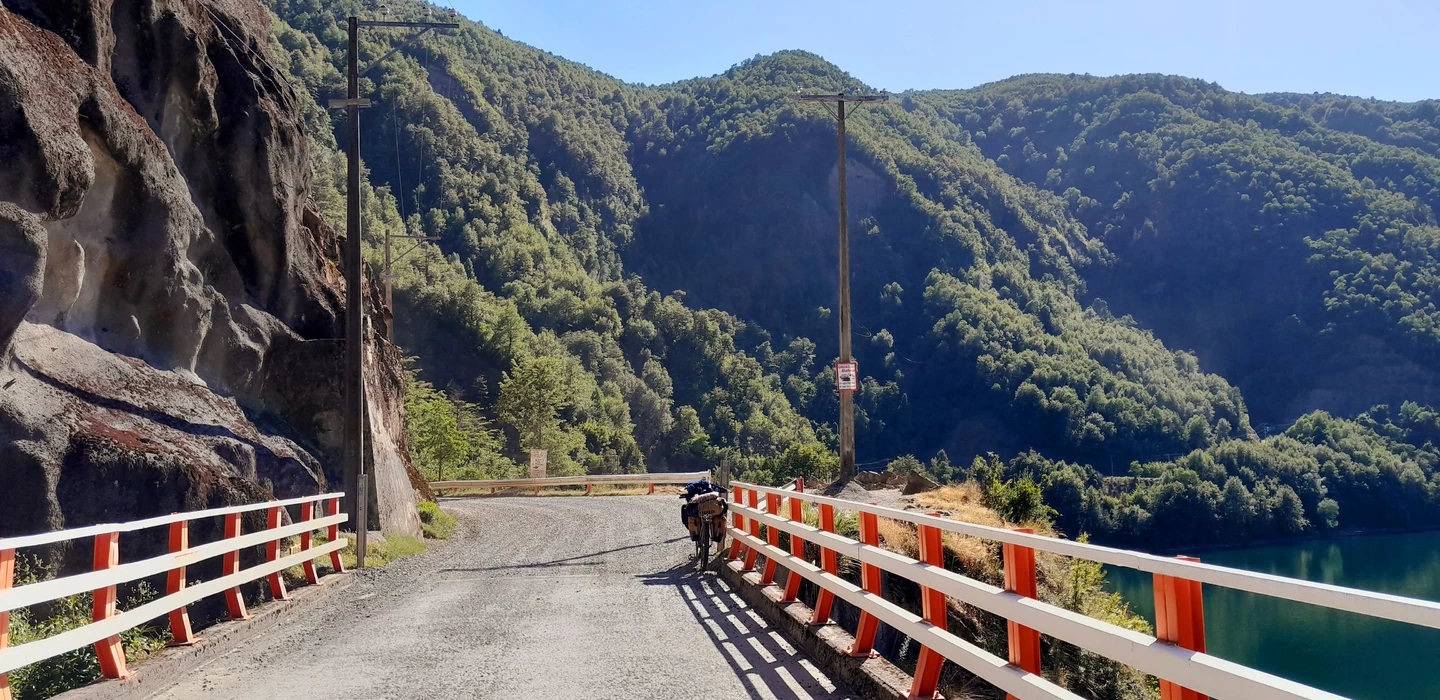
Unfortunately, there is quite a bit of traffic here too and you are constantly getting dusted by cars driving past.
In return, the mountain landscape is beautiful here and I saw my first volcano, Callaqui.
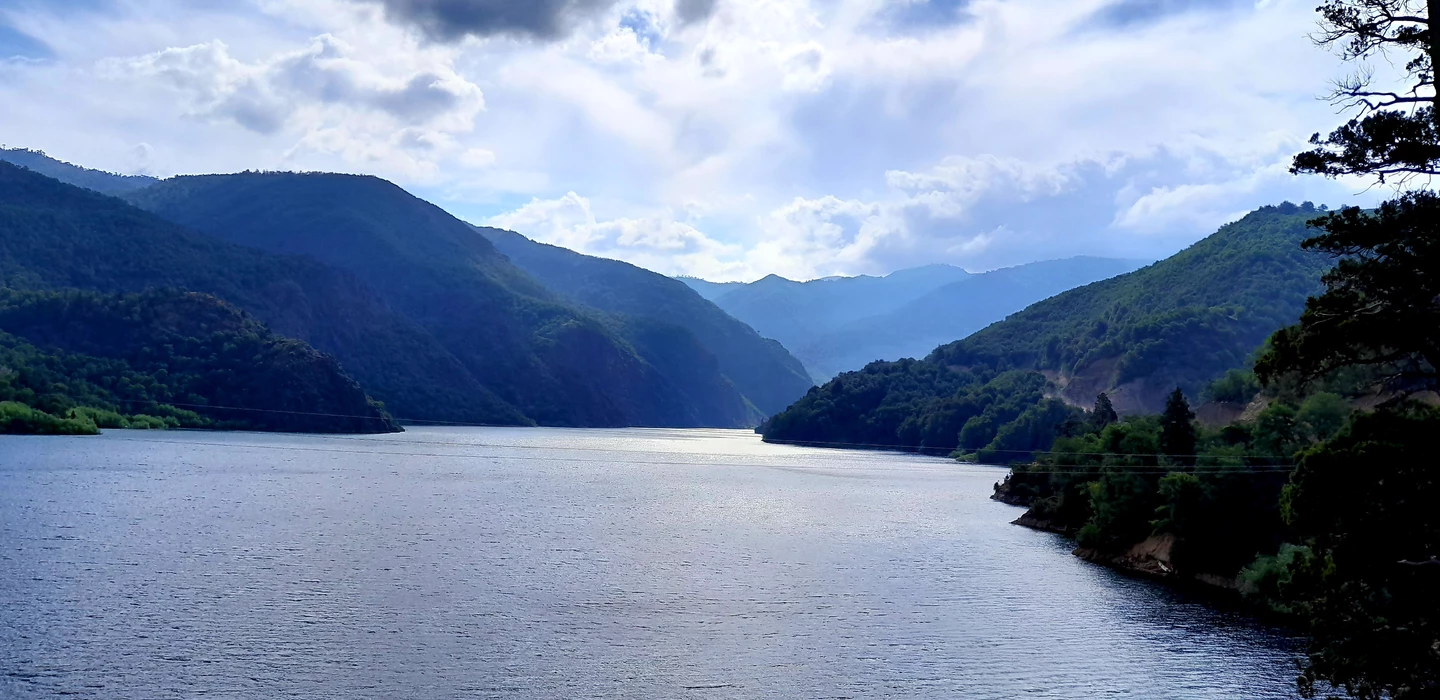
On the last day of the year I had to climb the most difficult climb. From Chenqueco the path led over a pedestrian bridge and then steeply up the mountain on a horse path.
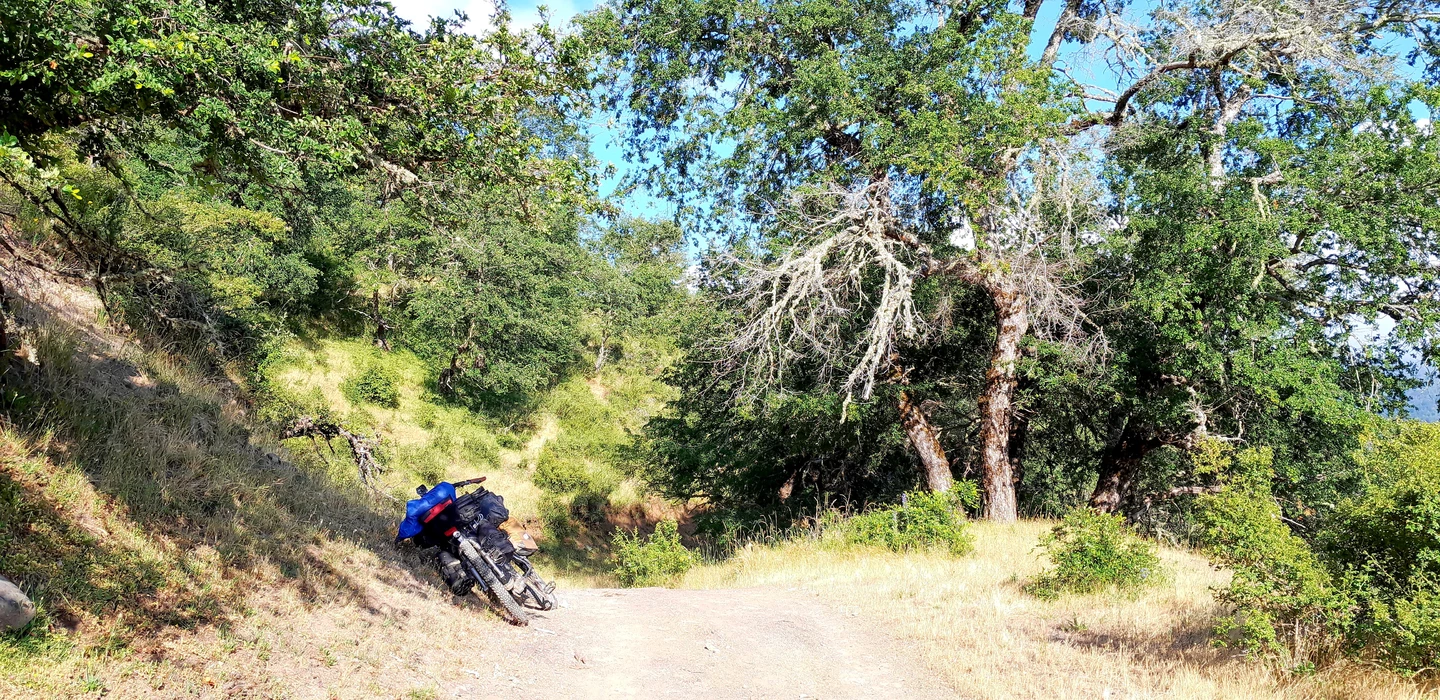
On the descent I even lost screws on the bike. Once at the bottom I decided to take the alternative route via Troyo.
The streets here are still extremely steep. Exhausted, I fell into the tent in the evening and didn't notice anything about the New Year.
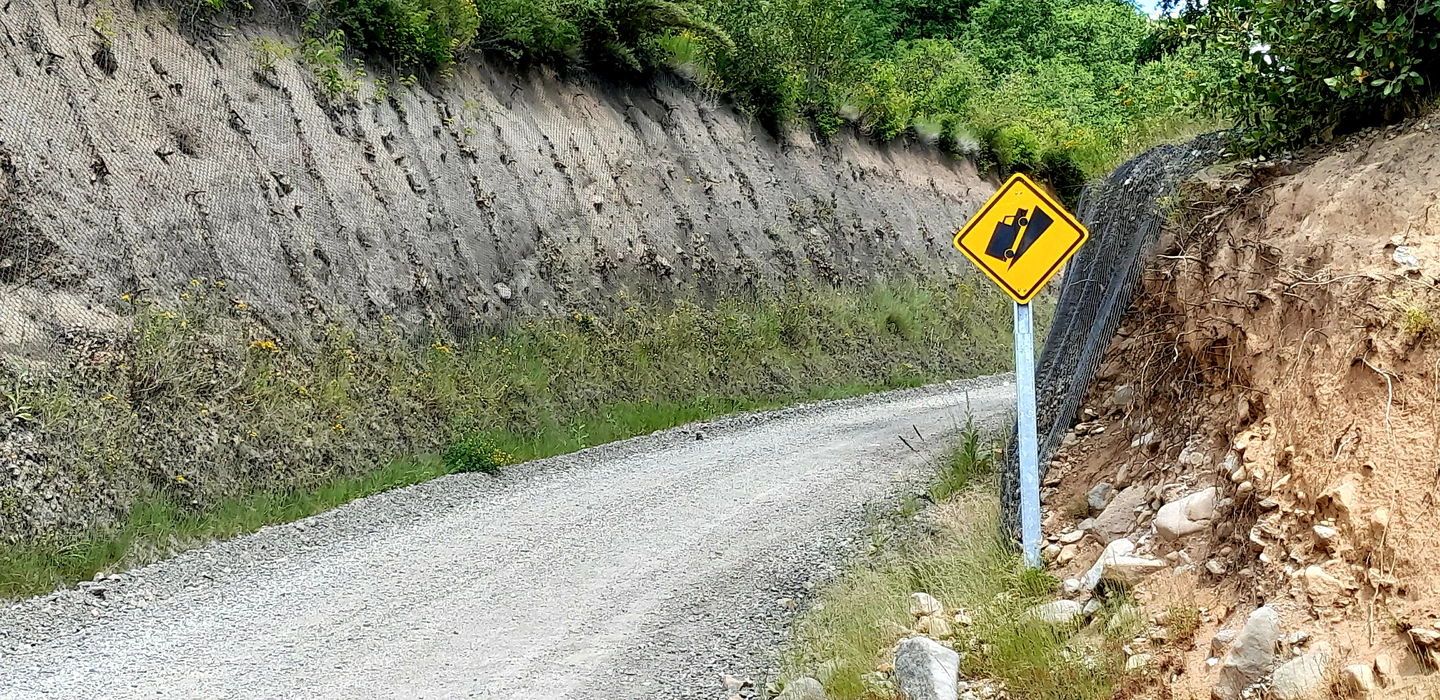
I was rewarded the next day with a beautiful sunrise. After 25 kilometers I reached the asphalt road and arrived in Lonquimay a little later.

The place looked like a ghost town on New Year's Day. After shopping, I drove on.
On an incline, a car that was approaching me way too fast was only able to brake at the last moment.

Here I saw the first real Araucaria forests. The Chilean Araucarias are evergreen trees that reach stems from 30 to 50 meters and trunk diameters from 1 to 2 meters.
Along the Laguna Galetué I drove towards Icalma. Here too, entire forests are rushed. Not exactly a nice sight.

The border crossing to Argentina is located in Icalma. The customs control was very friendly and efficient on both sides. There was a great panorama on the departure to Villa Pehuenia.
From the beginning I had difficulties in Argentina with the purchase of cash. With the help of locals and my family at home, it always worked somehow.
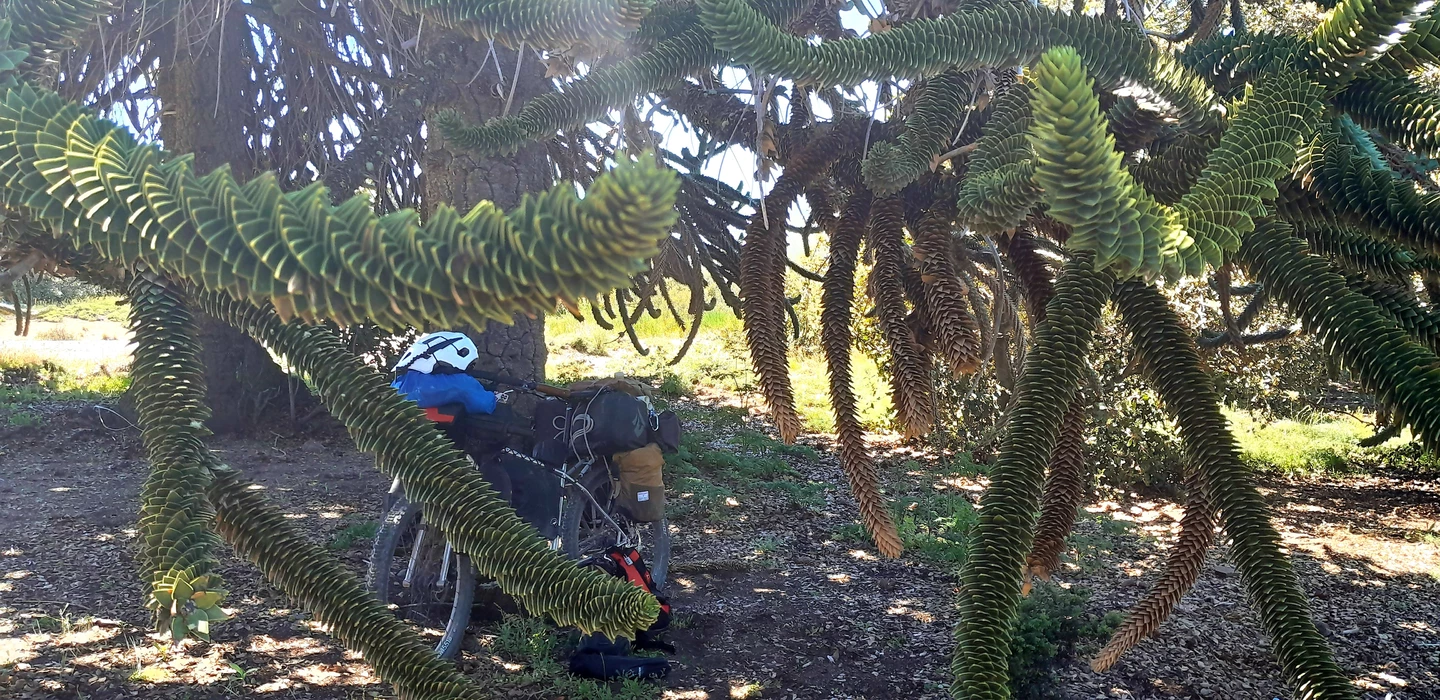
I drove south along Lago Aluminé. Here, too, most streets are not paved. The material used is usually better to cycle.
However, there is also a lot of traffic and corrugated sheet slopes. Some drivers take no consideration at all and drive too quickly. I call them "Burros", which means "donkey" in Spanish.

Outside of Aluminé I met my first touring cyclist. He just had to repair a flat tire, comes from Buenos Aires and is cycling through South America without a plan.
After a short conversation we had to say goodbye to each other.

At night the temperatures drop quite a bit. This means my tent and sleeping bag are pretty wet in the morning. In the evening I usually try to find a campsite by the river.
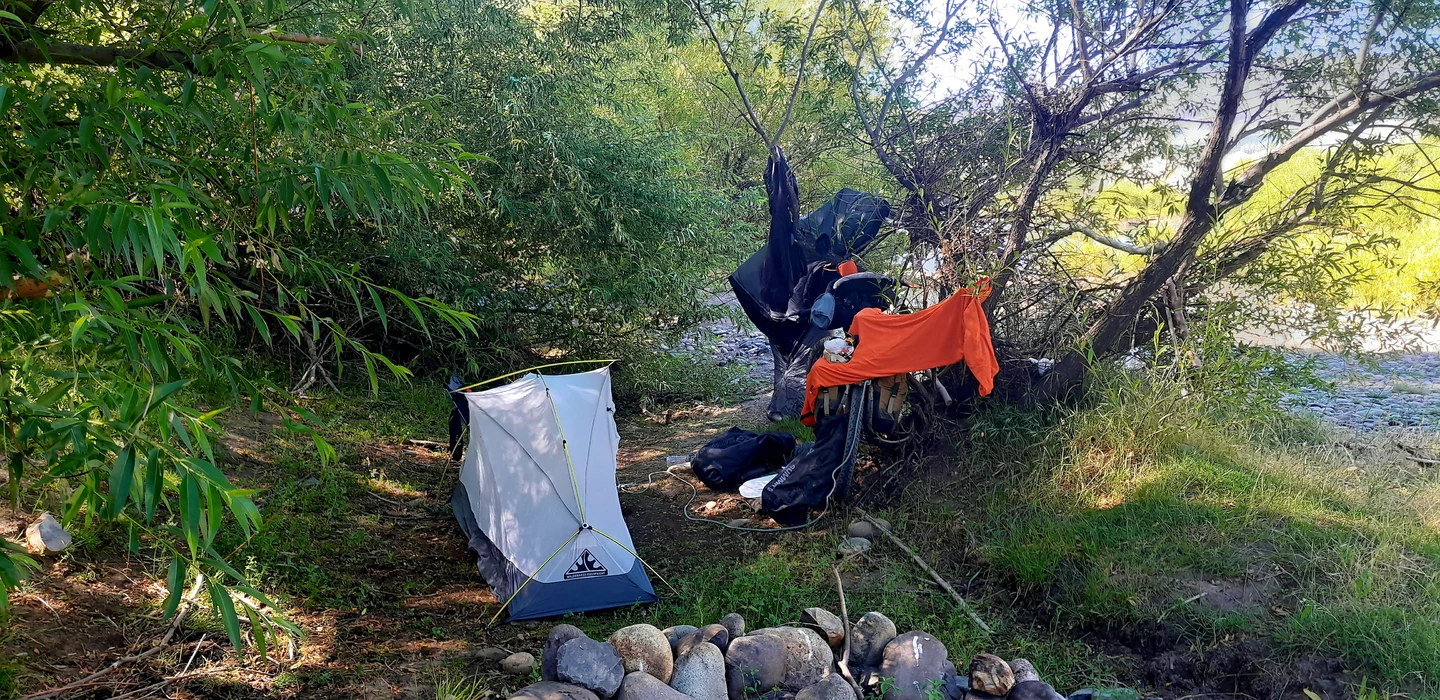
In Junin de los Andes I already met the next cyclist at the campsite. Niels comes from Holland and cycles from Ushaia to Colombia. https://www.polarsteps.com/NielsdeGrave1/9272831-bike-trip-south-america

Another cyclist from Buenos Aires also arrived there. Hector cycles a bit through the surrounding lakes for 2 weeks.
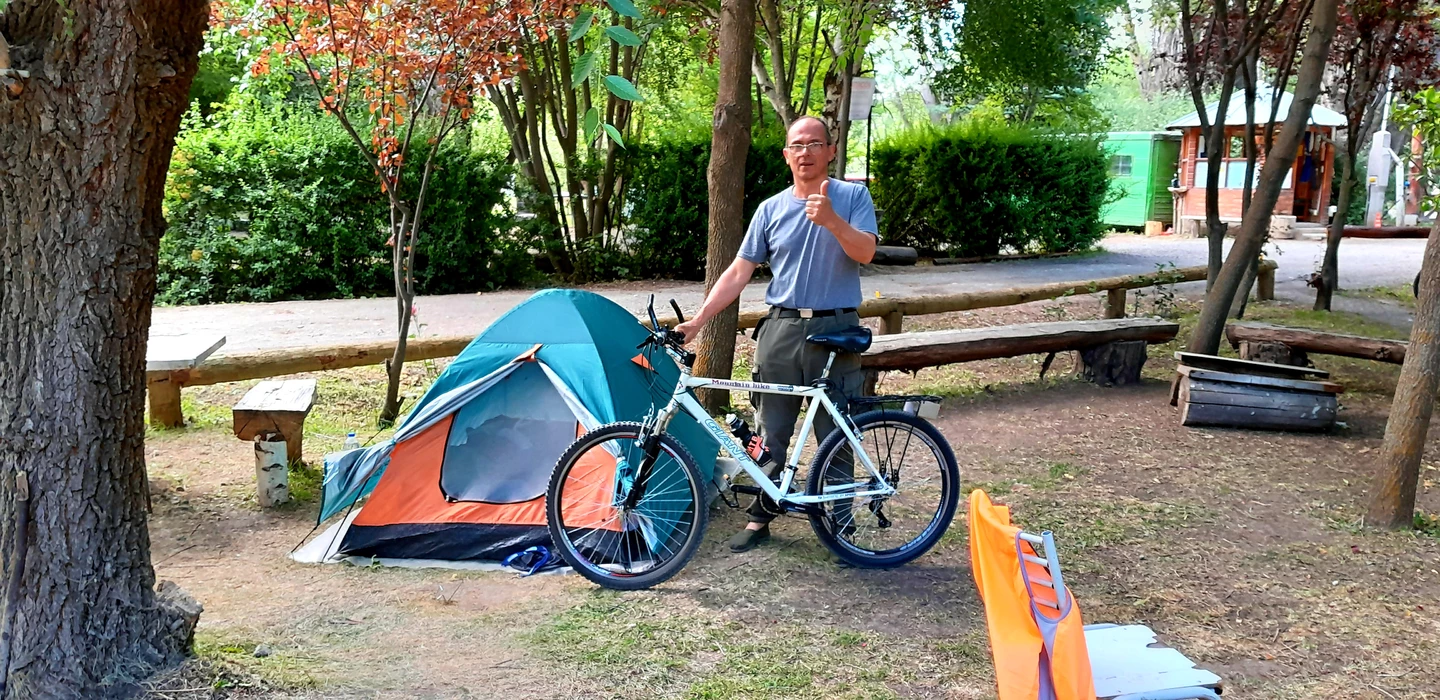
Niels had recommended an alternative route from Junin to San Martin de los Andes that does not take the busy Ruta 40.
On the drive to Lake Lolog I was immediately surprised by the rain. Due to the hot temperatures, my alarm goes off at 4:30 a.m. The temperatures are still relatively pleasant until 2 p.m.

There was a great reunion with Florian and his family in San Martin de los Andes. They have been traveling through Chile and Argentina since October. Always looking for some nice climbing spots.
I got to spend three days with them, which was really fun. They travel further until the end of February before heading home. Engraziel fetg for everything and safe travels.
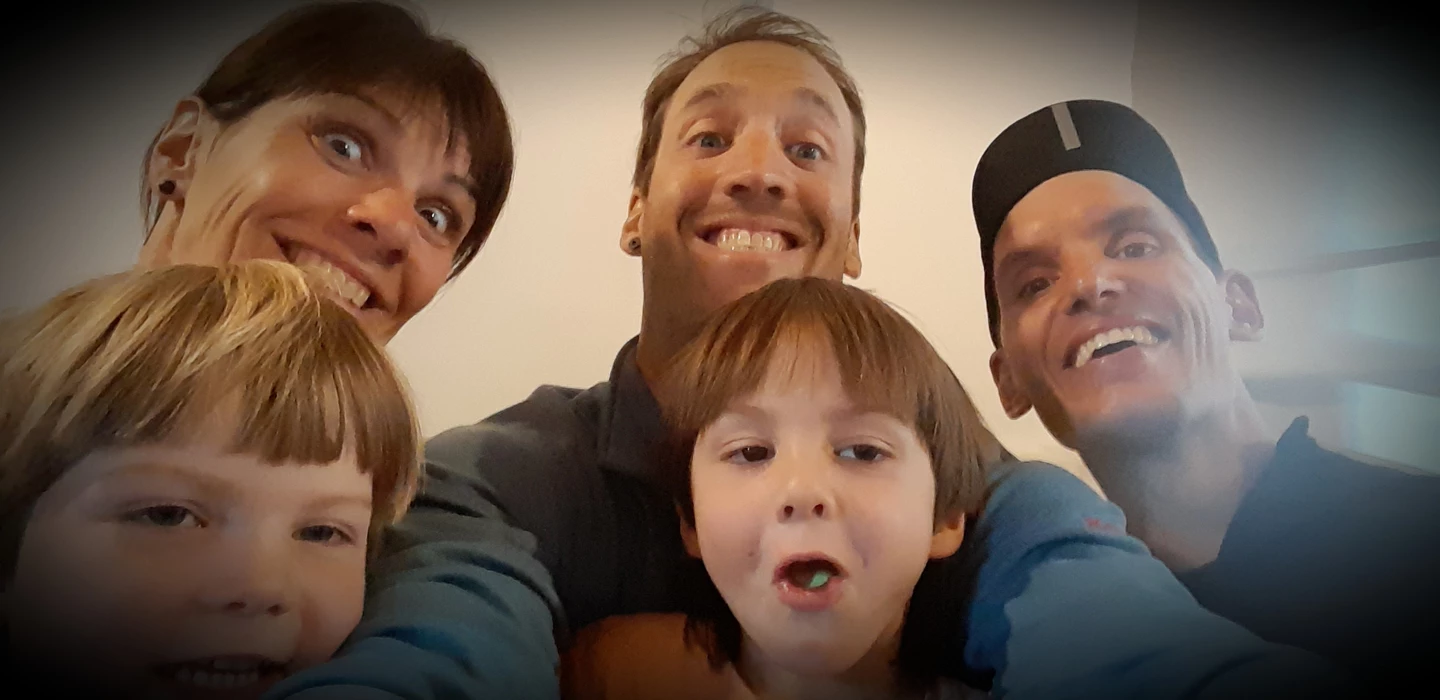
For me it goes further south, to the first large lakes. I would like to try out my packraft there for the first time.